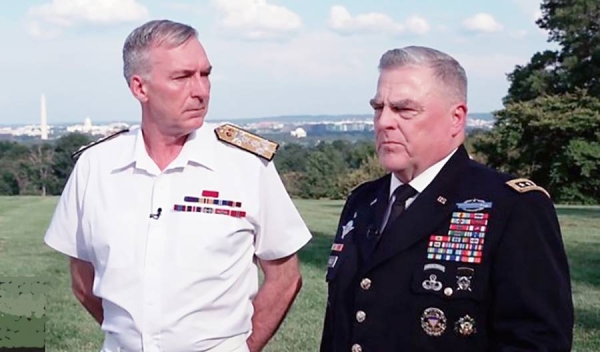
Yuri Malenchenko is one of the most accomplished Russian cosmonauts in history. By December 2015 he is already the veteran of five separate missions and has logged just over 641 days in orbit, which means he has spent more time off the planet than almost anybody.
He is also the calmest man I have ever met. A quietly spoken, undemonstrative 53-year-old, Yuri is one of those naturally composed people who can reassure you with the smallest gesture. All in all, I could not have hoped for a steadier commander to be strapped in beside on my first voyage into space.
Which is why I know it’s a bad sign when I glance across at Yuri and notice that there’s a tremor in his hands.
And it had all been going so well. For six hours our tiny Soyuz capsule, blasted into orbit by rocket from Kazakhstan, had travelled through space at 25 times the speed of sound towards our destination, around 400km from Earth. With just 400 metres to go until contact, the spacecraft, in automated mode, began its standard fly-around of the International Space Station (ISS) before locking on to the docking port for the final approach.
Creeping softly forward, we are now less than 20 metres away, close enough for me to see the space station’s cluttered docking area. The camera view of our port begins to loom large on the monitor in front of Yuri. And, unbeknown to me, our orbit has just begun to carry us over the United Kingdom, a nice piece of synchronicity with which to kick off this whole adventure: me arriving at my temporary home for the next six months in full view of my permanent one.
And then, at 17 metres from contact, the master alarm goes off and red lights flash on the console. The Soyuz is aborting. Why? There has never been an automated docking that aborted this close to the space station. Even for Yuri, this is new territory.
It’s a thruster sensor failure, apparently. But no worries. There’s a procedure. In space flight, there’s always a procedure. In this case, the procedure is that Yuri will switch to manual control and fly us in by hand. Simple.
Well, in theory. The Soyuz gently backs out to 90 metres from the space station and then Yuri gets ready to bring us forward again. Our orbit is taking us from day to night, and the lighting conditions are less than ideal. In the pitch darkness of space, the searchlight on our little craft suddenly seems to have the feeble range of a bedroom torch. Yuri hunches forward and peers into the periscope in front of him.
That’s when I notice the trembling hands and think, well, if Yuri is anxious, maybe this isn’t such a great situation.
At this point, I should outline some of the consequences of a crash. The ISS cost $100bn to build, took 10 years of multinational collaboration, and is arguably the most advanced structure humanity has ever made. The worst-case scenario would be a rupture to the space station, or a rupture to the Soyuz, or both, leading to a rapid depressurisation – survivable, possibly, but a major catastrophe.
Alternatively, glancing against a solid object could send the craft into a tumble that might prove impossible to arrest. The space station is not able to grapple a Soyuz capsule with the robotic arm; unlike with cargo vehicles, it has no means to reach out mechanically and grab you. You would be left rolling through space for ever.
Coming in practically blind, the Soyuz yaws about 30 degrees off target, drifting towards the back of the space station. This is where Yuri’s experience really tells. A more junior cosmonaut might have ploughed on in the hope of correcting the manoeuvre, with possibly disastrous consequences. Not Yuri. Despite the pressure and the voices from mission control in his ears, he has the composure to gently back the Soyuz away out into space. Then he settles himself and prepares to try again.
Maybe it’s just my habitual mindset as a helicopter pilot, which is to be constantly checking your systems and contingency plans, but uppermost among my concerns at this point is our fuel level. There needs to be enough fuel to get us home safely – and at this stage, yes, there’s plenty. Yet all this unplanned flying on manual control is eating into our precisely budgeted supply. If we stay out here, it’s not impossible that we will have to give up on docking altogether and head back to Earth.
This after the buildup, the hype and fanfare, the ceremonial farewells, the emotional partings from Rebecca, my wife, our two boys, and my parents, the big departure in clouds of smoke with the nation looking on. Suffice to say, I’m going to feel a bit sheepish if I return 12 hours later.
As Yuri once more lowers his face to the periscope and begins to line up the Soyuz for its third attempt at docking, I’m keen that he should get it right.
Yuri hunches forward to peer into the periscope. Once again, Tim Kopra and I are largely powerless to help him, unable to see what he’s seeing. The capsule begins to move in and almost straight away I can sense the difference in Yuri’s demeanour. The tension leaves him, he is steady-handed. He has very clearly got this under control as he brings the capsule in for a textbook-manual docking.
As we put the Soyuz into hibernation mode, we heard the voice of Scott Kelly, our commander who was already aboard the ISS, over the radio. “Welcome to space,” he said. “What would you like for dinner?”
• Limitless: The Autobiography, by Tim Peake, is published by Cornerstone, at £20). To order a copy for £17.40, go to guardianbookshop.com. Delivery charges may apply.












